The AMD Radeon RX 5500 XT Review, Feat. Sapphire Pulse: Navi For 1080p
by Ryan Smith on December 12, 2019 9:00 AM ESTSynthetics
While we’ve already had our an in-depth at Navi with the launch of the RX 5700 series earlier this year, new GPUs within the family sometimes expose bottlenecks that we haven’t seen before. So our synthetic tests can help to highlight these bottlenecks, as well as any other changes that the GPU designers may have made in the process of scaling down their GPUs.
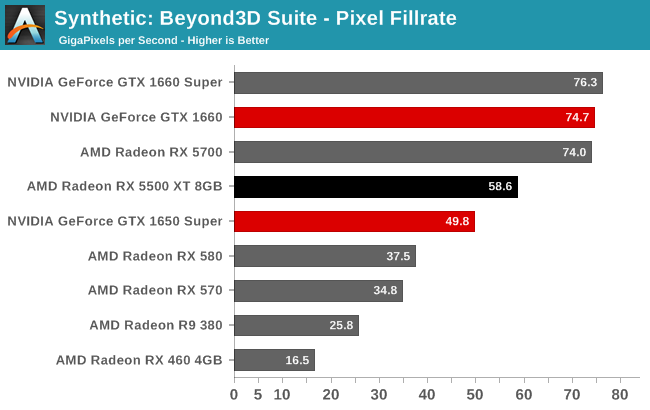
The RX 5500 XT does surprisingly well in our pixel fillrate benchmark. Even though it only has half the ROPs and half of the memory bandwidth of the more powerful RX 5700, it’s able to deliver ~79% of the pixel fillrate in this test. This is much better than I was expecting. It may be a sign that AMD’s ROP partitions aren’t seeing great scaling from 32 to 64 pixels per clock, or alternatively that AMD has made some significant efforts in keeping the RX 5500 XT from diving too hard due to its more limited resources.
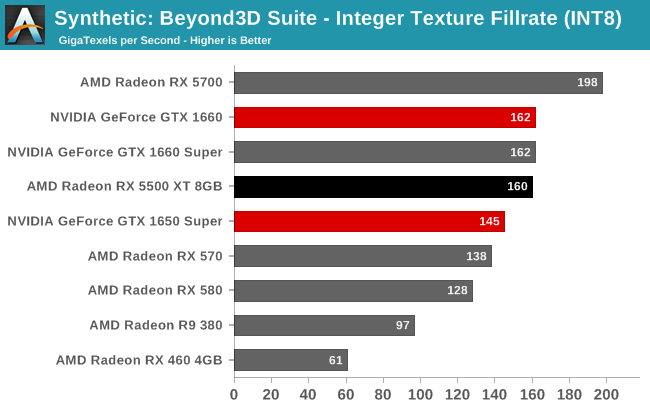
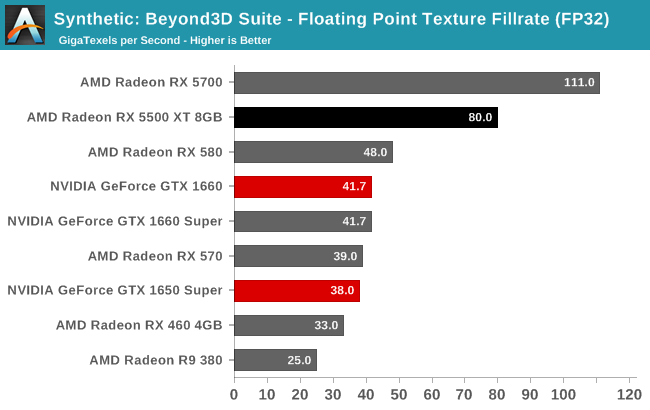
Meanwhile texture fillrates are more in line with our expectations. The RX 5500 XT has 14 fewer CUs than the RX 5700 but a slightly higher clockspeed, and its results reflect that.
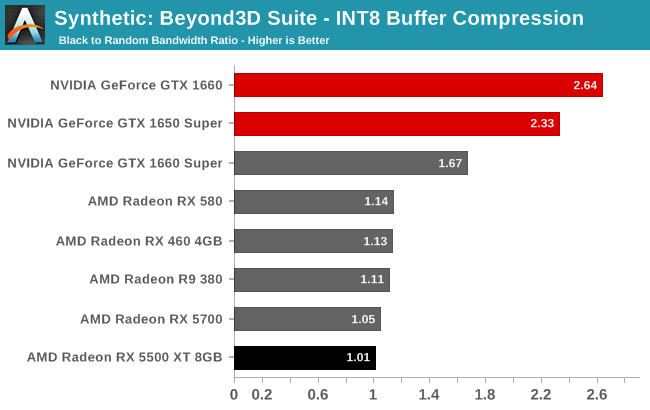

Our buffer compression ratios are also relatively consistent with what we’ve seen on the RX 5700 cards. AMD does have capable delta color compression technology; however it seems to struggle under intensive synthetic workloads. Under lighter workloads we see better compression ratios, but lower throughput overall.
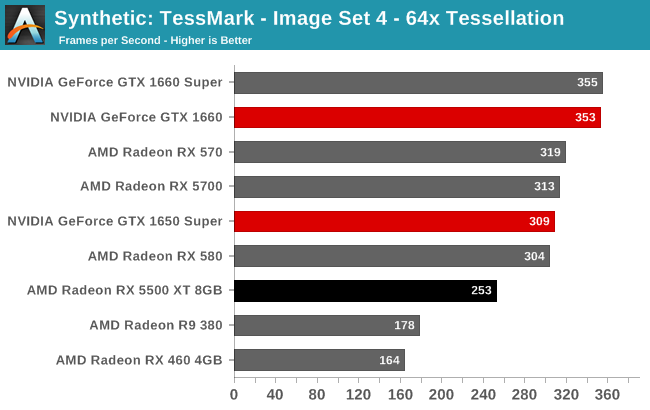










97 Comments
View All Comments
dr.denton - Friday, December 13, 2019 - link
Bought an RX570 8GB this summer and feeling pretty good about that decision right now. Especially seeing how well Polaris cards seem to hold up in modern titles like Metro and RDR2.n0x1ous - Thursday, December 12, 2019 - link
Only matching power numbers with 7nm vs Nvidia's 12nm. Sad. Nvidia on 7nm is going to dominate again.Fataliity - Thursday, December 12, 2019 - link
Nvidia's 7nm should be going against RDNA2. Which I"m sure will help alot. RDNA was rebuilt because of issues, and didn't get everything it was supposed to (Similar to Zen vs Zen2. They could only do so much with its budget).This is their first gen of a new arch.
Personally though, the compression synthetics speak the biggest to me. They need to match Nvidia's compression on color changes for bandwidth. That's why AMD's cards need more TFLOPS to reach same performance. If they can get their compression to Nvidia's level, then I think it will do wonders for their numbers.
eva02langley - Thursday, December 12, 2019 - link
However during that time, AMD image quality is better.peevee - Friday, December 20, 2019 - link
Their cards have so much memory bandwidth compared to flops they would not benefit much from compression I 'm afraid.Something else is terribly wrong. Just not enough ALUs on 5500 series, have to keep frequency up = bad efficiency. They needed to use TSMCs high-density/low-power libraries, not high-performance libraries for GPUs... They would be immensely better with twice as many ALUs at 1GHz and low-power DDR5...
eva02langley - Thursday, December 12, 2019 - link
It is the first iteration of a new uarch, things will only get better and better.jabber - Thursday, December 12, 2019 - link
Oh well no need to swap out my 480 for another year at least.eva02langley - Thursday, December 12, 2019 - link
Hell no, you don't need to. This generation of cards is the first time I can remember seeing identical performances for the same price tag.lightningz71 - Thursday, December 12, 2019 - link
So, for what I'm seeing, if you're shopping for a sub-$200 video card, you have the following scenario:1) If you have no real concerns about power usage (i.e. have a 750+ watt PSU and don't have high electricity costs) then the RX590-8GB Cards offer you the best bang for the buck.
2)If power is a MAJOR issue for you, the GeForce 1650 Super is your best option, unless you absolutely need to have more VRAM, then it's the 5500XT 8GB.
3) If you need solid drivers and advanced video encoding/decoding codec support, the 1660 is what you need as it has the full, current NVenc solution that appears to outstrip AMD for the moment.
For me, with an 850 Watt PSU, and only an occasional gamer and desktop user, I'm going to be looking at good deals on the RX590 8GB for now, unless the 1660 super comes down drastically in price.
eva02langley - Thursday, December 12, 2019 - link
Total disinformation, you don't need a 750W Power Supply for a 590. 500W is more than enough. Basically, If you don't have a 9900k or an OC R9 3000, I don't see the need for more than 500-600 Watts.